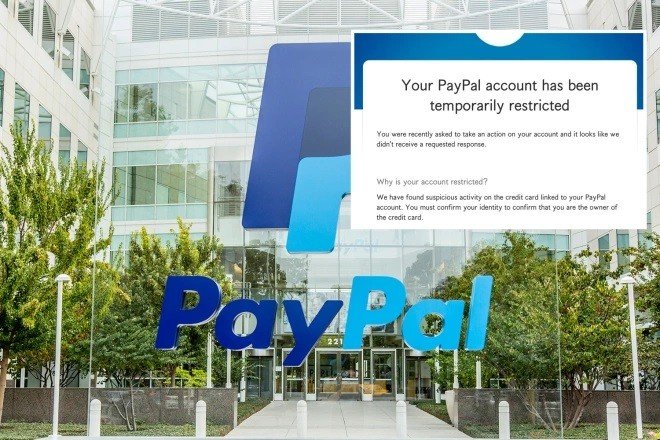UNFORTUNATELY, scam emails are becoming common place in inboxes and some are much harder to spot than others.
Below is an example of a scam PayPal email and how you can tell that it’s fake.


The above scam looks very convincing but there are a few ways to tell that it’s fake and you shouldn’t click the link it directs you to.
Suspicious email address
Firstly, the phishing email hasn’t been sent from an official PayPal email account.
The name of the scammer’s account has been changed to “PayPal Service” but the actual email address is a Google Groups one and it’s full of odd letters and numbers.
You can check the email address associated with an account name by hovering over the account name at the top of the email or clicking on it.
Anything other than an official email address is a red flag.
Attempt to make you panic
A lot of phishing emails include an attempt to make the victim panic.
The above email states in bold “Your PayPal account has been temporarily restricted” and goes on to claim you won’t be able to receive and make payments or take funds.
This is an attempt from the scammer to try and make you give away your details quickly before you’ve had time to think.
PayPal has previously said that you’d be told about any problems with your account via the message centre in the website and app.
The company would not email you asking for “documents confirming your identity”.
If you want to check if there has been a problem on your account, go to the official PayPal website, login and check.
Poor phrasing
Poor phrasing is another good way to spot an email scam.
Watch out for spelling mistakes and grammatical errors.
The fake email example above is concerning because it looks very official and doesn’t appear to have mistakes.
However, PayPal has said it would never address you as “Dear Customer” or “Dear” and then your email address.
Instead, it would address you by the name associated with the account.
If a scammer gets your name wrong that could be a big giveaway sign so they tend to go for a more general greeting.
PayPal told us: “At PayPal we go to great lengths to protect our customers, but there are still a few simple precautions we should all take to avoid falling victim to scams.
“All communications from PayPal to account holders would be sent to the secure message centre within their PayPal account. You will have a secure message waiting if PayPal does need you to take any action.
“A genuine PayPal email will only ever address you by your full name – anything that starts differently should immediately raise your suspicions. Look out for spelling mistakes, which are a common tell-tale sign of a fraudulent message.”
Tips
Remember to never click a suspicious link in an email or give your personal details away unless you’re 100% sure it’s to an official source.
You can report any scam PayPal emails you receive to [email protected] and the company will investigate.
If you have accidentally given away login details, go to your account immediately and change your password and security questions.
subit




